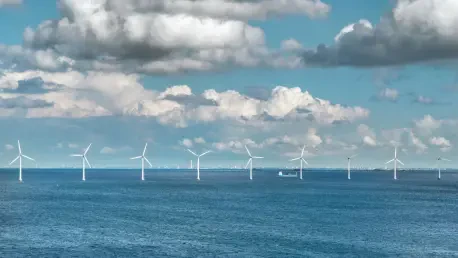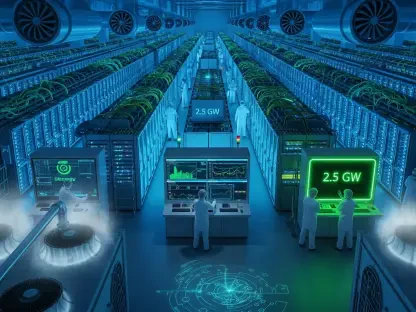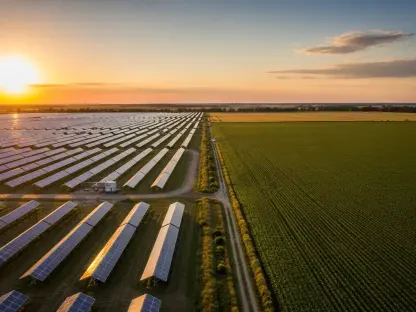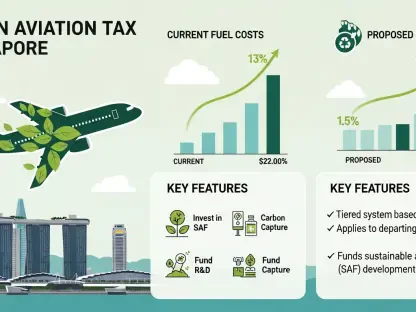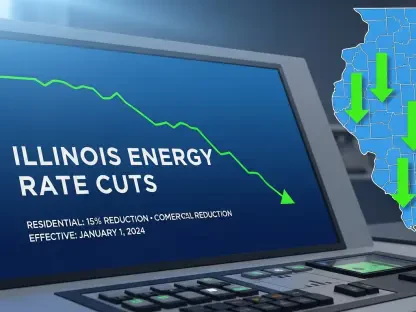In the heart of Virginia’s energy landscape, Dominion Energy stands as a pivotal force, serving millions of customers while spearheading one of the most ambitious renewable energy projects in the United States. The Coastal Virginia Offshore Wind project, with its staggering 2.6 GW capacity, has captured the attention of industry watchers, policymakers, and sustainability advocates alike. Amidst a backdrop of rising data center demands and evolving energy needs, this roundup dives into diverse opinions, insights, and analyses from various industry stakeholders to unpack Dominion’s latest quarterly achievements, challenges, and strategic direction. The purpose here is to synthesize expert perspectives and provide a comprehensive view of how this utility giant is shaping the future of clean energy while navigating complex headwinds.
Unpacking the Coastal Virginia Offshore Wind Project
Progress and Potential: A Game-Changer in Renewables
Industry observers have hailed the Coastal Virginia Offshore Wind project as a landmark initiative, noting its status as the largest offshore wind farm in the U.S. with 66% completion reported in the latest quarter. Many stakeholders emphasize the project’s timeline, with initial power delivery anticipated in early 2026, positioning it as a critical step toward national renewable goals. Analysts from the renewable energy sector highlight the significance of its 176 turbines in driving clean energy capacity to unprecedented levels.
However, not all views are uniformly optimistic. Some financial experts point out the project’s hefty $11.2 billion price tag and a levelized cost of electricity now at $84 per megawatt-hour, a rise attributed to lower renewable energy credit revenues. While industry leaders acknowledge bipartisan support as a stabilizing factor, they also caution that potential delays—stemming from issues with the specialized installation vessel—could push full completion into 2027, raising concerns about meeting tight deadlines.
A contrasting perspective comes from environmental groups, who focus on the broader impact rather than immediate costs. They argue that the project’s ability to power critical infrastructure, from military bases to tech hubs, outweighs short-term financial hurdles. This diversity of opinion underscores the multifaceted nature of such a massive undertaking, balancing economic, logistical, and ecological considerations.
Economic Ripples and Customer Outcomes
Economic analysts have offered varied takes on how the wind project will affect Dominion’s customer base. Many note the projected net monthly savings of 63 cents per customer, a figure that suggests long-term affordability despite upfront cost increases due to U.S. tariffs totaling $690 million. This savings potential is seen as a key selling point by utility sector commentators who advocate for sustained investment in renewables.
On the flip side, some fiscal watchdogs express skepticism about whether these savings will hold if further delays or cost overruns emerge. They point to the risk of energy inflation, a concern echoed by industry insiders who warn that abandoning or slowing the project could have ripple effects on regional energy prices. This tension between immediate costs and future benefits remains a hot topic in economic circles.
Policy experts add another layer, emphasizing the project’s role in job creation and local economic boosts. They argue that the initiative’s value extends beyond direct customer savings, potentially invigorating coastal communities through infrastructure development and supply chain opportunities. This broader economic lens highlights why many stakeholders remain committed to seeing the project through despite challenges.
Political and Industry Dynamics at Play
The political landscape surrounding Dominion’s wind project draws mixed commentary from policy analysts. A significant number point to consistent federal and state support in Virginia as a crucial tailwind, especially following recent elections that maintained a favorable stance toward clean energy. This bipartisan backing is viewed as a stabilizing force by many in the renewable sector.
Conversely, some industry critics highlight external pressures like tariff impacts as persistent threats to progress. They argue that while political will is strong, global trade policies and supply chain disruptions test the resilience of such large-scale ventures. These voices call for more robust contingency planning to shield projects from international economic shifts.
A third perspective comes from global sustainability advocates who place Dominion’s efforts within a wider context of international clean energy goals. They suggest that the project’s success could set a precedent for other U.S. utilities, reinforcing national commitments to carbon reduction. This global outlook contrasts with more localized concerns, illustrating the complex interplay of regional and international priorities shaping the initiative.
Data Centers as a Parallel Driver
Virginia’s booming data center industry has sparked significant discussion among energy analysts, with many noting a 17% rise in Dominion’s contracted capacity over recent months. Technology sector commentators view this surge—linked to over 450 facilities accounting for more than 25% of state sales—as a defining factor in the utility’s planning, driving unprecedented demand for reliable power.
Some infrastructure experts, however, raise concerns about the timeline for meeting this demand, pointing to a typical four-to-seven-year span from request to connection. They argue that while the wind project offers a sustainable solution, the immediate strain on existing grids could pose risks if renewable integration lags. This cautionary stance emphasizes the need for accelerated infrastructure upgrades.
A more forward-looking view emerges from clean tech proponents who see synergy between the wind farm and data center growth. They suggest that renewable energy from the project could uniquely position Dominion to power tech expansions without over-relying on fossil fuels, potentially setting a model for other regions. This optimistic take contrasts with more pragmatic concerns, highlighting a spectrum of thought on balancing growth with sustainability.
Financial Health and Strategic Insights
Dominion’s financial performance in the latest quarter, with operating earnings climbing to $921 million, has elicited positive reactions from market analysts. Many in the investment community view this as a sign of robust health, especially amidst a $50 billion investment plan spanning through 2029. They commend the utility’s ability to fund ambitious projects while maintaining fiscal stability.
Differing opinions surface from risk assessors who focus on the balance between investment and returns. They note that while earnings are strong, the rising costs tied to the wind project and data center infrastructure warrant close monitoring. These analysts advocate for leveraging renewable credits more aggressively to offset financial pressures, offering a practical tip for stakeholders.
Another angle comes from strategic planners within the energy sector, who suggest prioritizing grid enhancements to support high-load clients like data centers. They argue that aligning infrastructure timelines with demand growth could prevent bottlenecks, providing an actionable strategy for Dominion and similar utilities. This mix of financial optimism and strategic caution reflects the nuanced challenges of scaling clean energy amidst rapid market shifts.
Dominion’s Broader Role in Energy Evolution
Industry thought leaders offer a range of perspectives on Dominion’s position as a transformative player in the energy space. Many highlight the utility’s dual focus on reliability and renewables as a blueprint for others, with the Coastal Virginia project serving as a flagship example. They see Dominion as a bellwether for how utilities can navigate competing demands in a decarbonizing world.
A contrasting view from some regulatory analysts emphasizes the need for caution in overextending resources, particularly in areas like new nuclear development where costs remain unpredictable. They suggest that Dominion’s measured approach to such investments could inform broader industry practices, balancing innovation with fiscal prudence.
Sustainability consultants provide yet another lens, focusing on how Dominion’s integration of wind power and data center support aligns with national energy policy goals. They argue that the utility’s efforts could catalyze similar initiatives elsewhere, urging other companies to study this model. This diversity of insight paints Dominion as both a leader and a learner in the evolving energy landscape.
Reflecting on the Roundup’s Key Takeaways
Looking back, this roundup captures a rich tapestry of opinions on Dominion Energy’s latest milestones, from the Coastal Virginia Offshore Wind project’s advancements to the surging data center demands in Virginia. Industry stakeholders offered optimism about renewable potential and financial strength, while also voicing concerns over costs, delays, and infrastructure challenges. For those eager to dive deeper, exploring Dominion’s regulatory filings or tracking clean energy investment trends could provide valuable next steps. Engaging with industry reports on offshore wind and tech-driven energy demands might also uncover further strategies to support a balanced transition. Ultimately, Dominion’s journey offers a compelling case study, prompting consideration of how utilities can innovate while safeguarding reliability in an era of rapid change.
